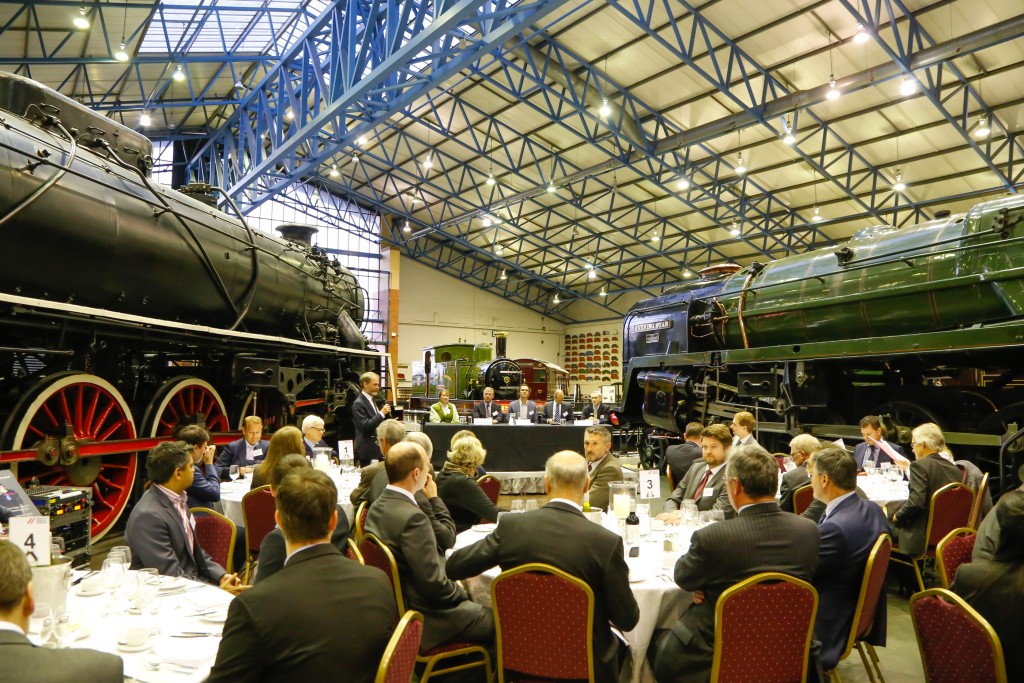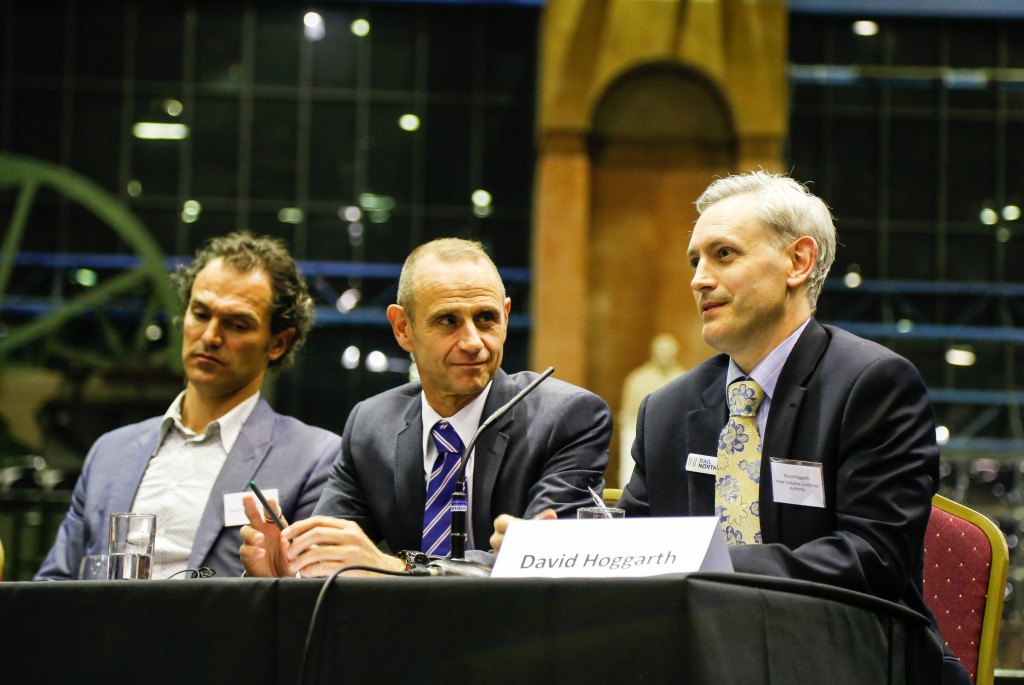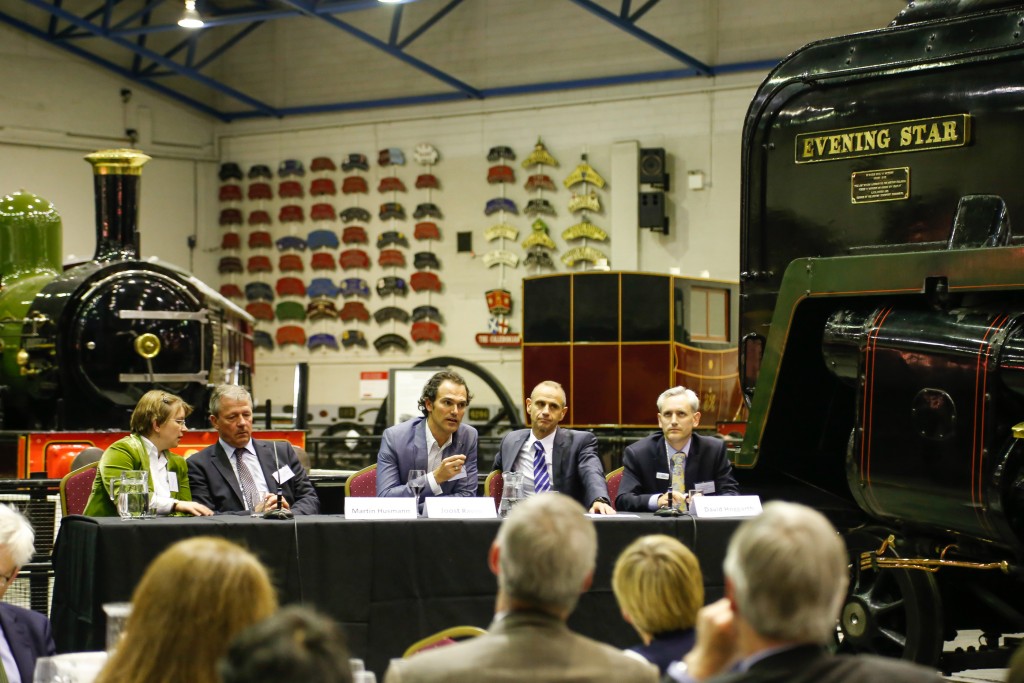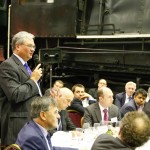Last night at the museum, 50 invited guests from the rail industry and beyond debated with Evan Davis the role of rail in creating the Northern Powerhouse. George Osbourne launched the Northern Powerhouse idea last June in a speech at our sister Museum of Science & Industry in Manchester.

The debate had been kickstarted earlier by Evan when he suggested last year that Hebden Bridge should be Britain’s second city. That was a jokey way of making the point that Britain doesn’t have a second city big enough to be a counterweight to the gravitational pull of London. Unless, that is, you start thinking about the stretch of Northern Cities from Lancashire across the Pennines into Yorkshire as a single entity.
It is an idea I first encountered in George Orwell’s Road to Wigan Pier, where he described ‘the industrial regions’ as:
“…really one enormous town, of about the same population as Greater London but, fortunately, of much larger area; so that even in the middle of them there is still room for patches of cleanness and decency”.

Life in these northern cities is immeasurable improved from Orwell’s 1930s depression setting, but the landscape of loosely connected towns remains familiar. It is a geography created by the eruption of the industrial revolution in a thousand uncoordinated places and consolidated by railways taking cotton and coal to the docks. But onto to this nineteenth century infrastructure we have now superimposed an economy that needs modern passenger trains carrying people to jobs in shops and offices. So how best to make that work?
To debate these issues with Evan we wanted to bring some perspectives from close to home and also from places with a longer history of joining up regions without an obvious single central city.

So our excellent panel was made up of David Hoggarth, newly appointed Director of Rail North, who is jointly responsible with DfT for letting and running the new Northern and Transpennine franchises, the thing that will make the immediate difference to rail services in the Northern Powerhouse; Martin Husmann, CEO of the Verkehrsverbund Rhein-Ruhr – the biggest transport authority in Europe serving a dispersed urban area of 7.8 million people and 39 transport operators; and Joost Ravoo from Netherlands Rail, the core of whose operations are around the multi-centred Randstad at the core of Holland.

We will write up a proper account of the discussion soon, but some of ideas that struck me:
- how the Randstad and the Ruhr ran simple understandable timetables with quick easy connections, even at the expense of underused services;
- how planned regeneration and development around stations had worked in Holland, with the railway enabling the development and the development driving rail traffic;
- the importance of having political structures that match the areas they are dealing with;
- the balance between new infrastructure and upgrading what we already have;
- how important speed really is compared to quality of service – do I mind being on the train a bit longer if I’ve got wifi and a comfy seat?
As Evan concluded, no manifesto of proposals to deliver to Whitehall just yet, but an evening of many ideas vigorously debated.
What do you think? Comment below to add to the debate.
Having a joined up transport policy is great but with the present government ideology is unlikely to come about without some serious compromises, including profitability of certain services. In this country I’ll believe it when I see it but always willing to be part of the solution.
If the Northern Powerhouse is to succeed a fast and efficient transport system is paramount. It will enable people to connect to the cities in search for better jobs in todays modern industries. A competitive network would create a vitality from which innovative ideas will flow there by keeping our transport system at the cutting edge of technology without having to rely on foreign design at the sharp end.
I am always impressed by the connectivity of public transport in both Germany and Switzerland whenever I visit – and that includes both rail and bus providers. It seems to me that the valley geography of the northern routes would suit a similar cooperative transport network with bus services feeding into the rail network at major stations rather than competing with it. The possible diversion of transport funding to regional / local authorities should be an opportunity to create such a system but will vested interests allow such policies to be considered – let alone be enacted.